Monitoring
the Meerkats
of the
Kalahari
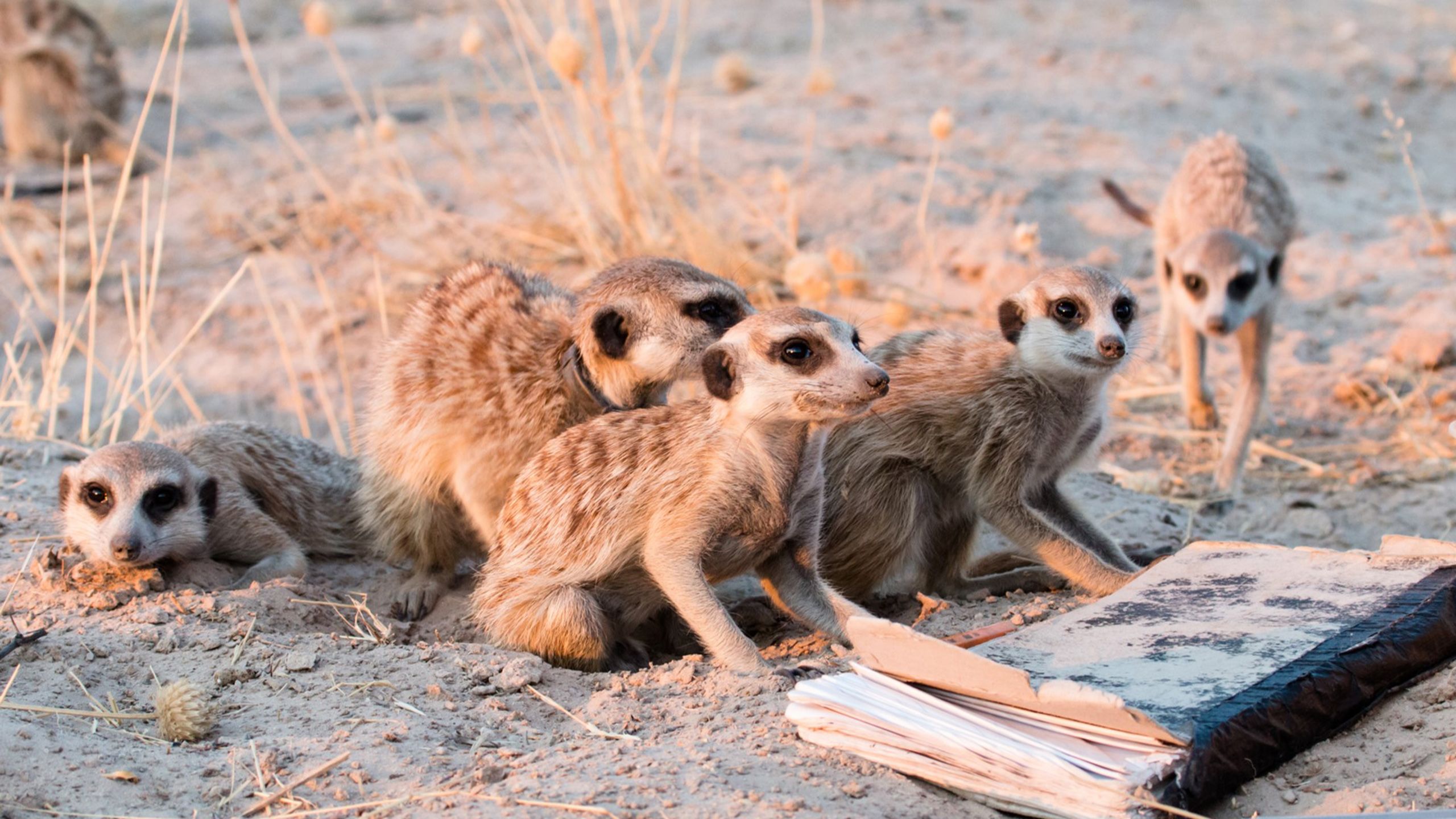
Meerkats love hard-boiled eggs.
This was the chance discovery that allowed Professor Tim Clutton-Brock unprecedented access to a society of wild meerkats, and the key that unlocked a thirty year research study.
Clutton-Brock, Emeritus Prince Philip Professor of Ecology and Evolutionary Biology in Cambridge’s Department of Zoology, is fascinated by how animal societies are organised - and how this affects their ecology and evolution. Meerkats breed ‘cooperatively’, that is, one female in each group breeds and the rest of the group work to support her and raise her young but do not breed themselves. Ants and bees live in societies this way, but in mammals cooperative breeding is rare.
“I wanted to know why some mammals are cooperative breeders, because it’s hard to see how societies of this kind have evolved.”
“What’s the benefit to the individuals who don’t get to breed, but spend their time helping others?” Clutton-Brock asks. Charles Darwin himself was challenged by the phenomenon in bees and ants; cooperative breeding seems entirely at odds with the principle of ‘survival of the fittest’, in which success means passing on your genes to the next generation.
In 1993 Clutton-Brock set off for the southern Kalahari desert in South Africa, where a TV crew had just finished filming meerkat groups. “It was the first time I’d seen meerkats in the wild,” he says. “It was fantastic - you could go right up to them because they’d become habituated to having the film crew around. There are very few wild animals you can do that with. I thought: if we could have a dozen groups habituated like this, we could explore the costs and benefits of cooperative breeding.”
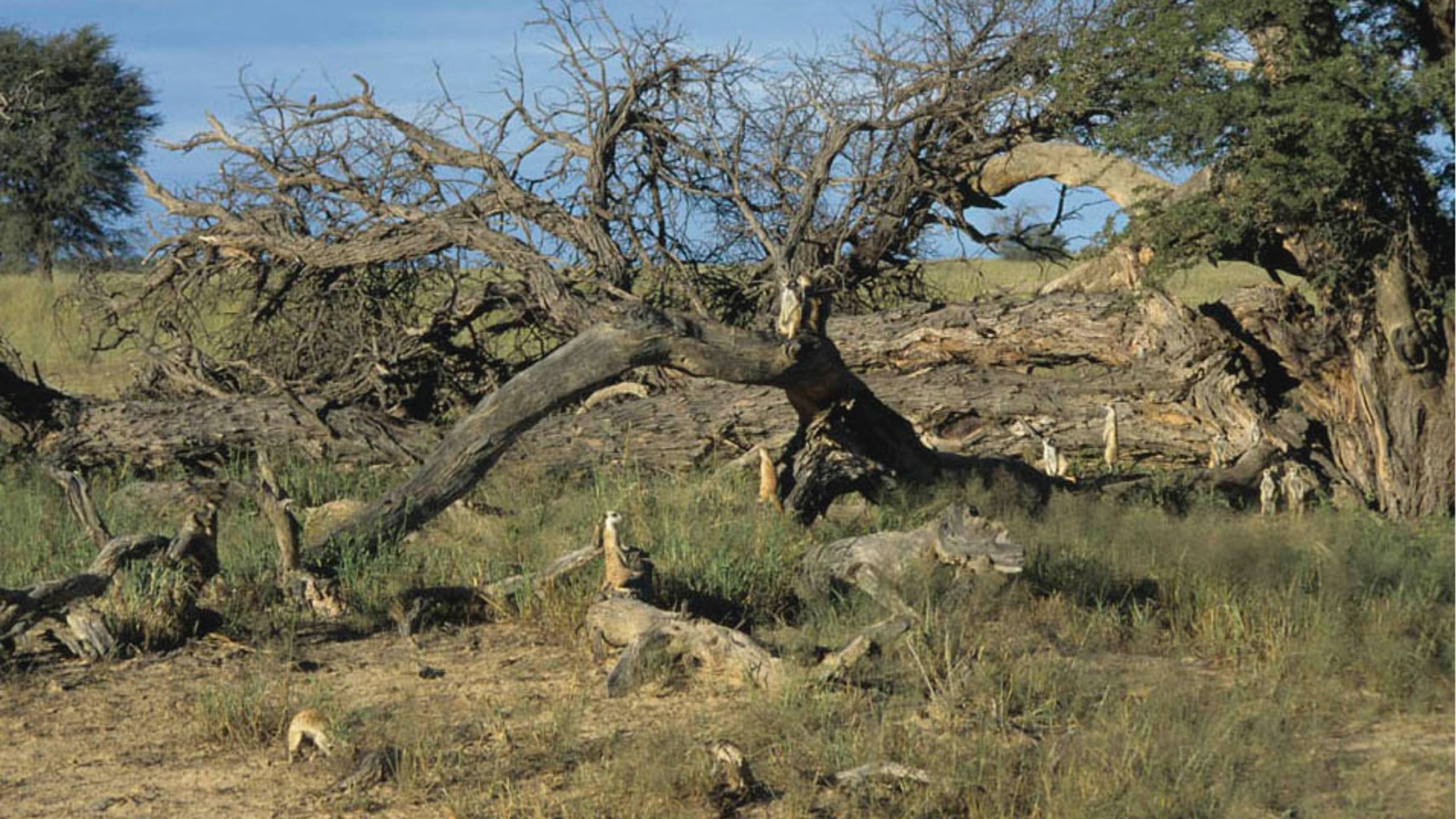
Many animal studies are based on just one or two groups, but with a dozen groups, Clutton-Brock reasoned, there would be enough data to get a much more accurate picture of what cooperative breeding was all about. He went home, successfully applied for a research grant, hired assistants, and went straight back to South Africa to get to work.
Gaining acceptance
The team’s first challenge was to get the meerkats used to their presence. “We tried all sorts of rewards to get the meerkats to tolerate us - mealworms, grasshoppers, peanut butter, but they weren’t interested,” he says. “We knew they raid plovers’ nests for the eggs, so we tried breaking a hen’s egg over their heads so it ran down the sides of their faces, to get them to lick it off. It didn’t work. But in the desert heat one of the eggs cooked on the side of a burrow, and they ate that straight away.”
“The most important thing we’ve learned about meerkats is that they like hard-boiled eggs,” he jokes.
The lure of the hard-boiled egg has enabled Clutton-Brock to persuade meerkats to be active participants in his research ever since. Rather than catch or anaesthetise them for daily weighing, which can cause them to dehabituate very quickly, he uses hard-boiled egg to persuade them to climb onto the scales and weigh themselves.
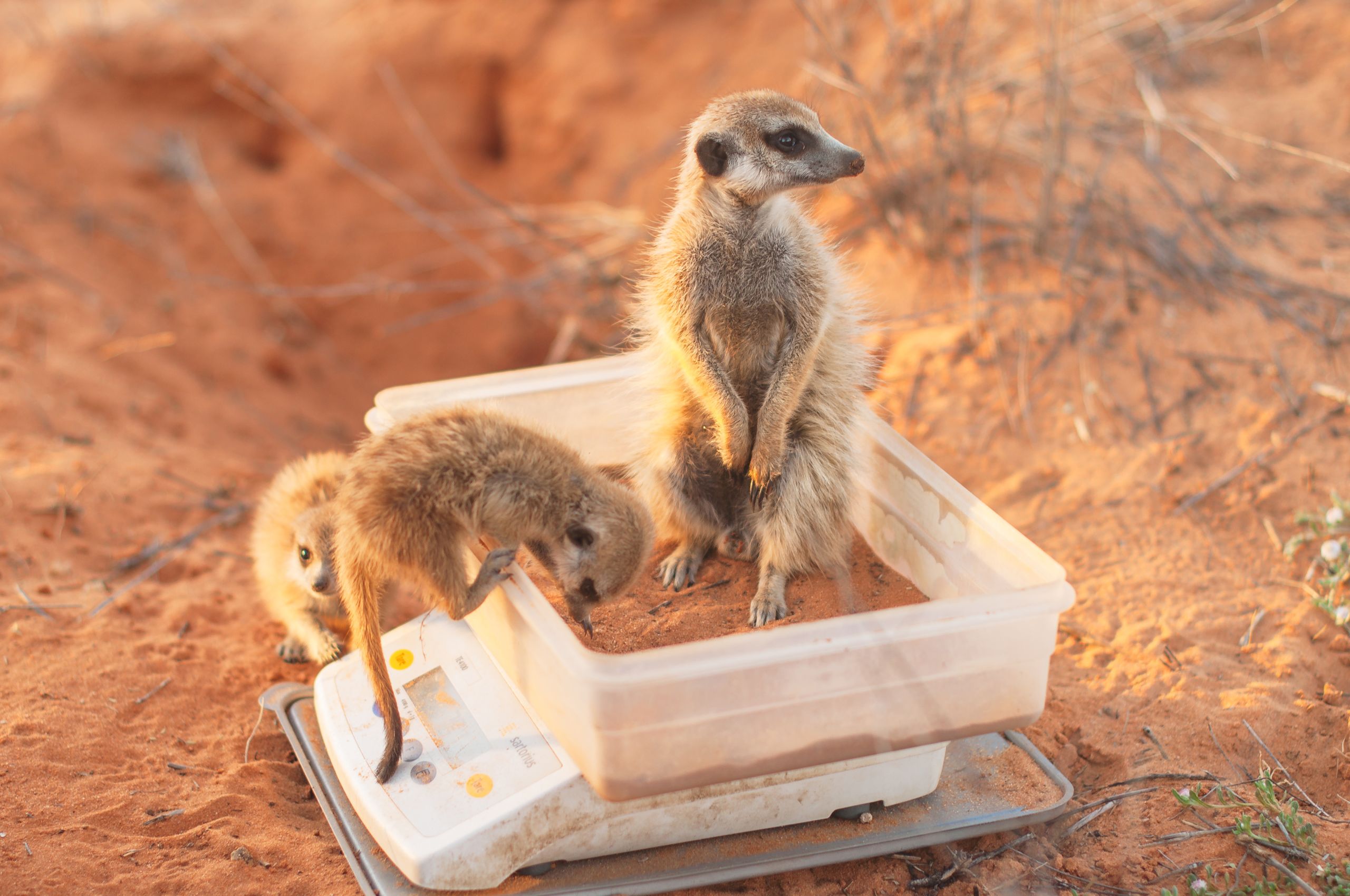
Hard-boiled egg encourages meerkats to weigh themselves. Credit: Dominic Cram.
Hard-boiled egg encourages meerkats to weigh themselves. Credit: Dominic Cram.
“The problem very swiftly became that they all wanted to climb onto the scales together,” he laughs. “But we’ve developed a system of weighing them individually each morning, lunchtime and evening, to track weight changes through the day and overnight.”
The information is used to explore the costs of helping, the distribution of workload across individuals, and the extent to which dominant breeders constrain the development of others in the group.
Hard-boiled egg has even allowed the team to perform ultrasound examinations on pregnant female meerkats. “We feed them crumbs of hard-boiled egg with one hand, and can ultrasound their tummy with the other hand. Remember these are fully wild animals! That’s very unusual,” says Clutton-Brock.
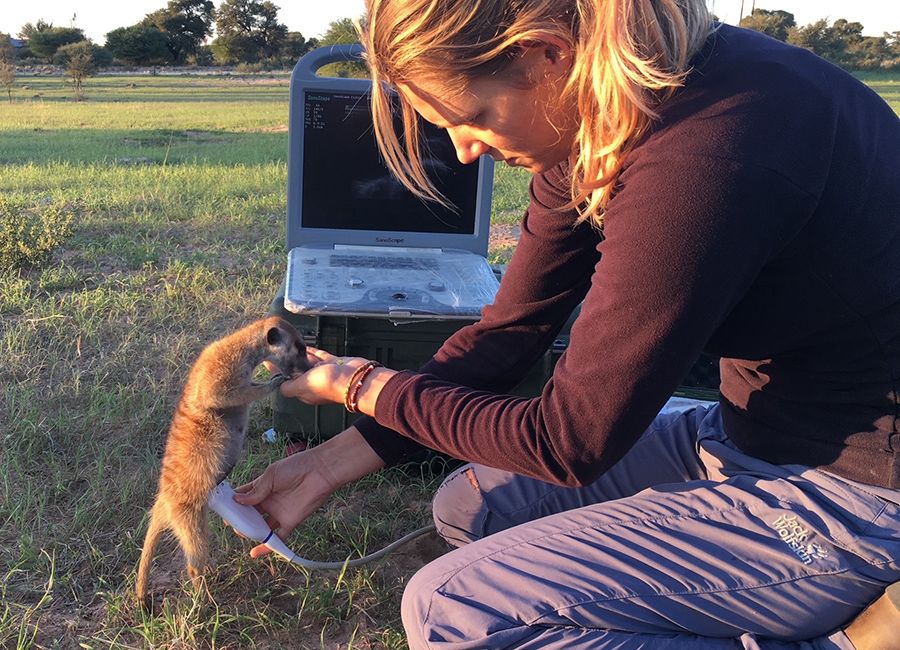
A researcher ultrasounds a pregnant female meerkat.
A researcher ultrasounds a pregnant female meerkat.
Building the project
When the value of the local currency crashed in 2001, Clutton-Brock realised that for the cost of running the meerkat project for a year, it would be possible to own his study site in the Kalahari outright. He seized the opportunity. Raising funds to buy the site and setting up a trust to own it, he created the Kalahari Research Centre and established the project on a more permanent footing.
“This is the ultimate dream of every field worker.”
“Buying your field site means your study is no longer at the mercy of whoever owns the land,” he says. “I don’t know of anyone else who’s been able to do it.”
With full control of the study site – an area of around 25km2 – the project team has been able to habituate 10 -15 groups of meerkats at a time, a total of around 200 animals.
Telling individuals apart requires each meerkat to be microchipped and given a five letter code, which identifies its file on the group’s database. But the scientists also name them, with naming rights going to the first person to spot a new pup emerging from its burrow.
“We give the meerkats all sorts of names: Mozart, Houdini, Stinker,” Clutton-Brock says. “People sometimes suggest it’s anthropomorphic, but what you want is a label that clearly identifies which animal you’re talking about. When you have hundreds to remember it’s much easier to use a name than a code.”
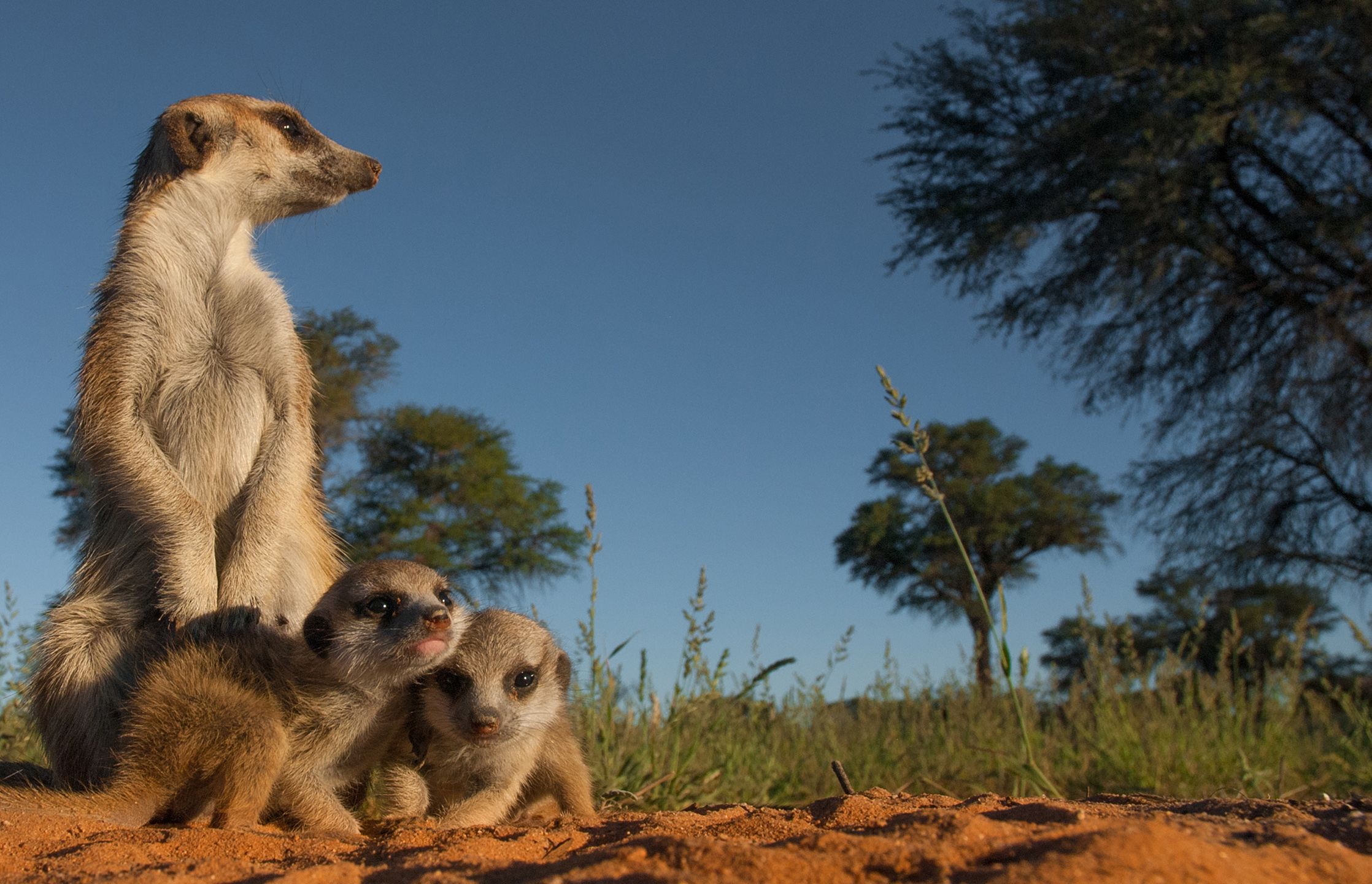
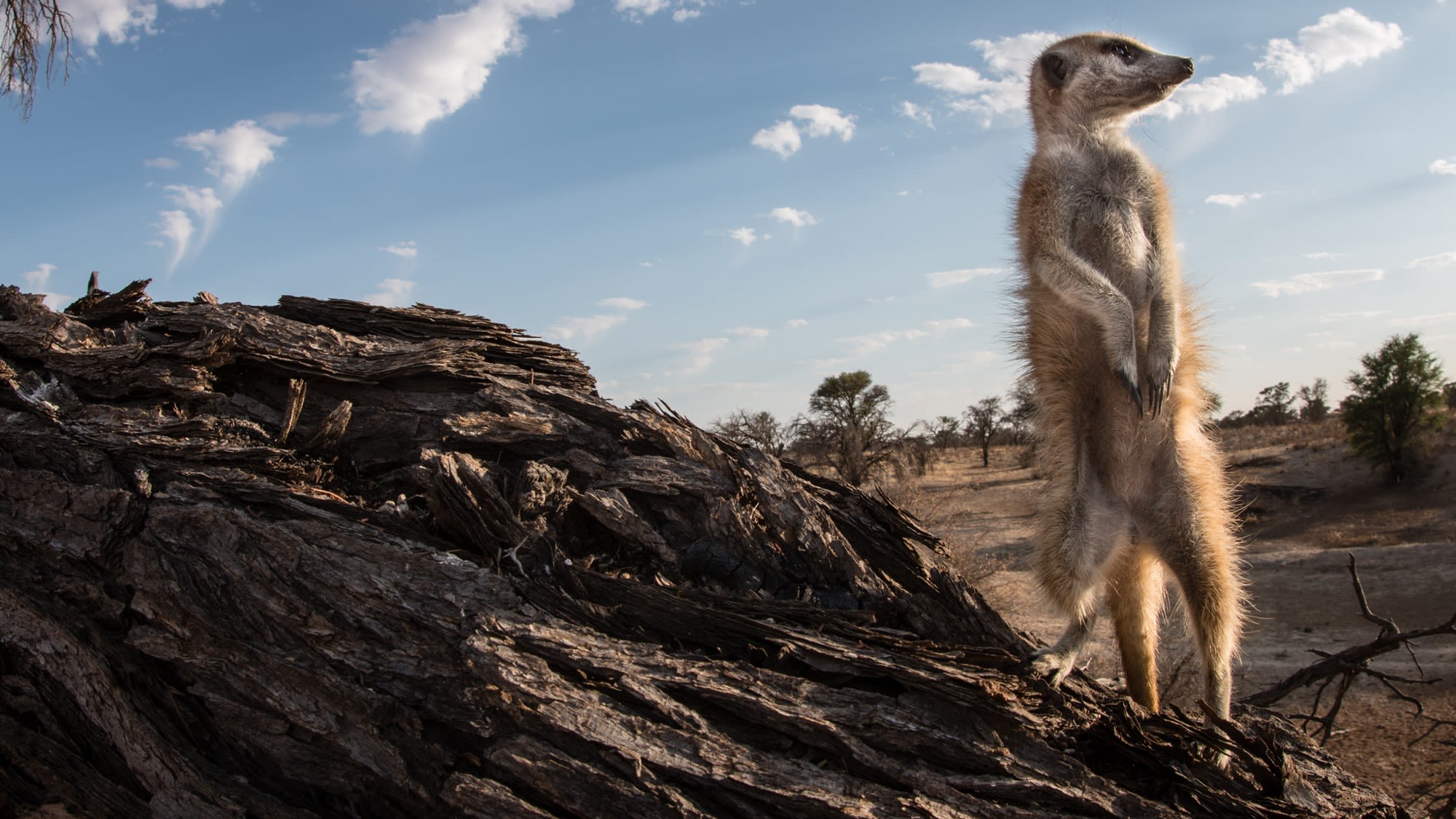
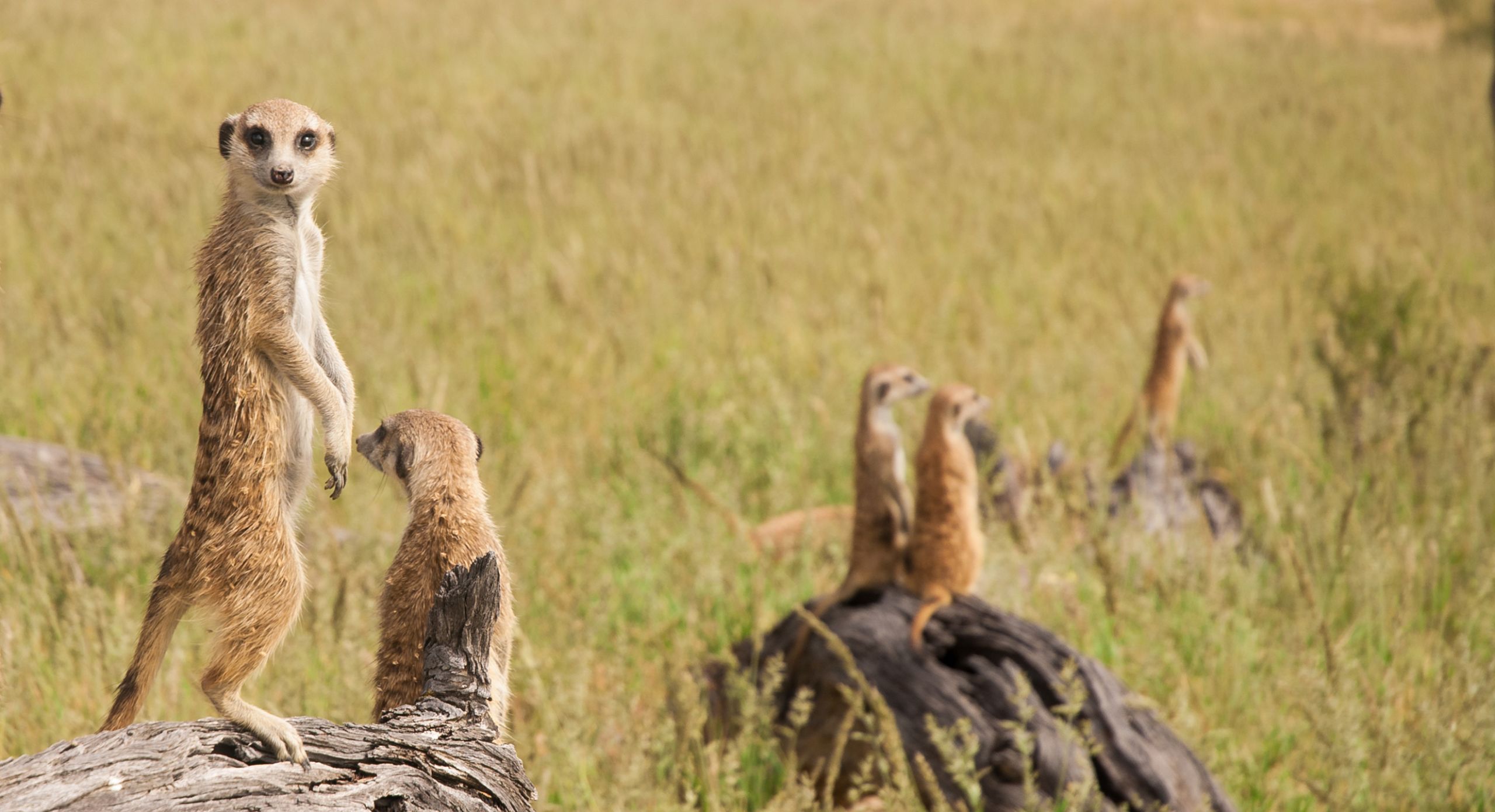
The opportunity to work with the meerkats continues to draw volunteers - usually biology graduates - as well as PhD students, postdocs and more senior researchers from around the world. Over the last thirty years, several hundred people have spent time at the project before moving on to careers elsewhere. Anyone who can afford to get to the study site can apply to volunteer, as most of the costs are covered by the research project. Some people stay for several years.
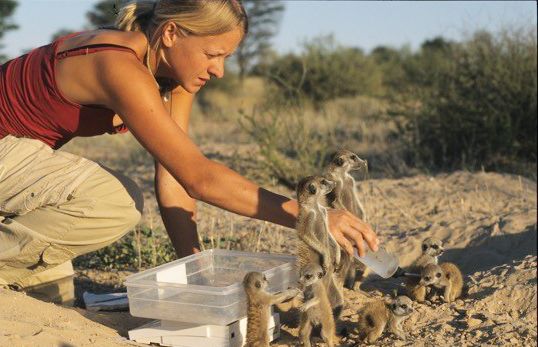
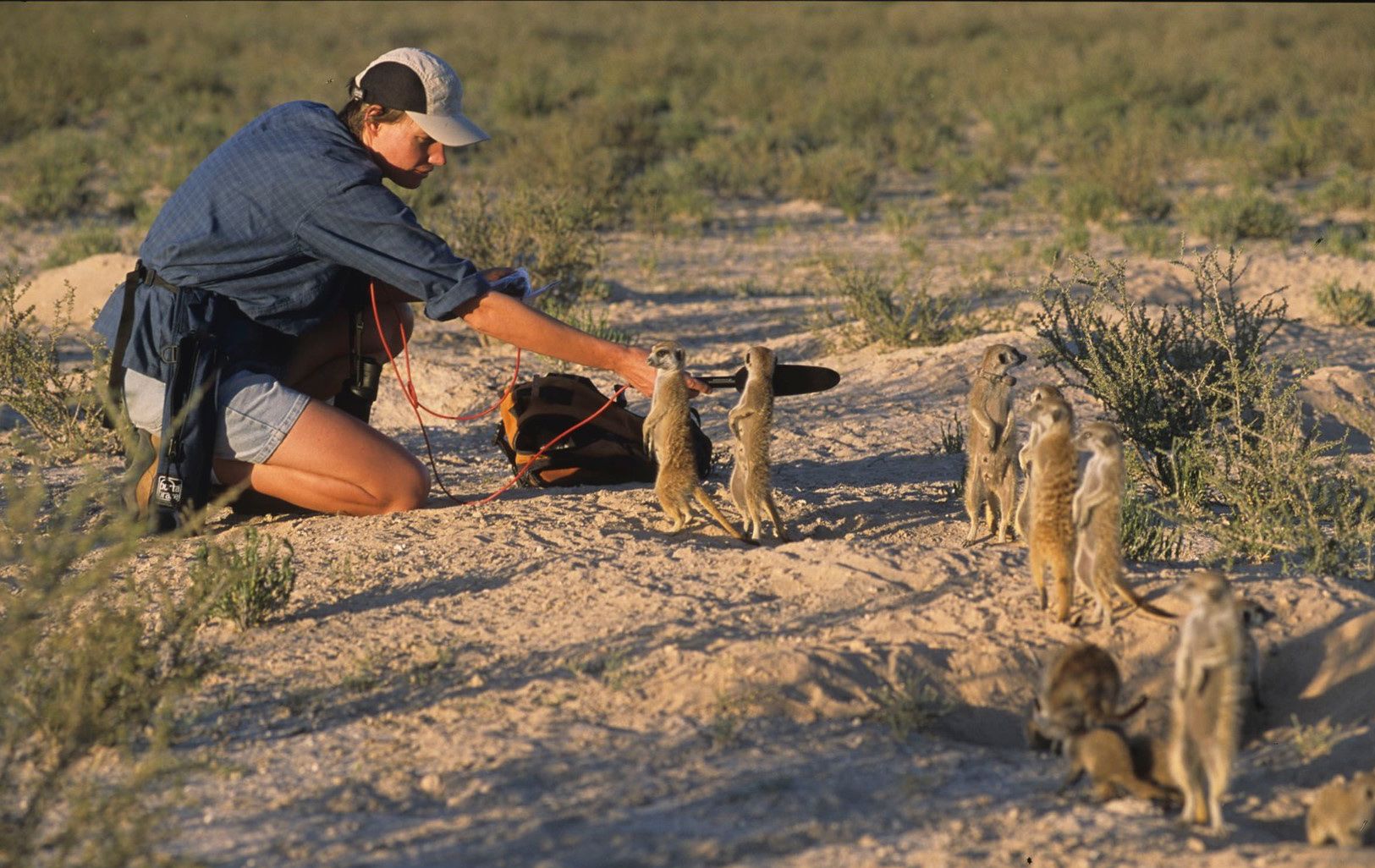
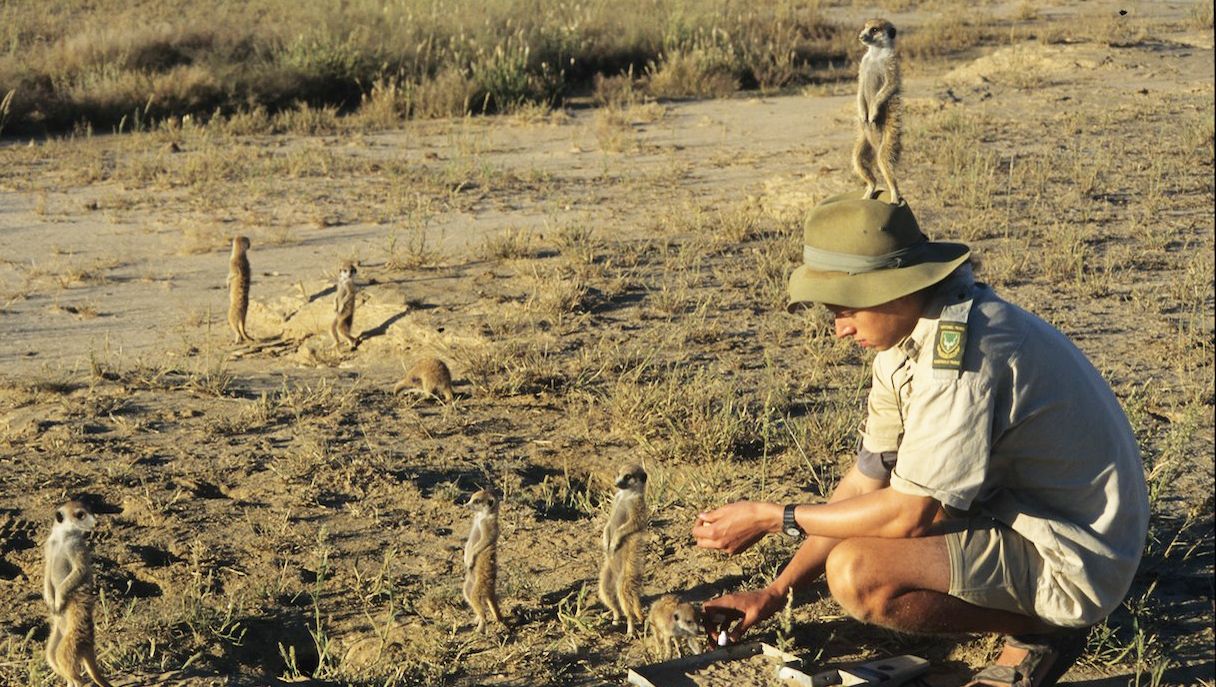



The meerkats have become so habituated that scientists can gain incredible insights into their society and the ecological consequences of cooperative breeding. Clutton-Brock’s team has now followed over 3,000 individuals throughout their lives: monitoring hormonal changes by collecting samples of blood, skin and faeces from recognisable individuals, and using DNA fingerprinting to identify kinship and breeding success.
These records of individual life histories allow them to investigate how events at one stage of a meerkat’s life affect its development, behaviour, health and breeding throughout the rest of its life. This provides opportunities to explore many different biological processes, and the team now collaborates with endocrinologists, geneticists, physiologists, epidemiologists and demographers from a dozen different countries.
“Our data is an unparalleled resource for a huge variety of studies – and will continue to be so for many years to come.”
“There are very few wild animals for which detailed records of the lives of individuals exist,” says Clutton-Brock. “We’ve used genetic analyses to plot family trees, and to develop pedigrees that allow us to start exploring the heritability of particular traits.”
The duration of the study means that the team can measure the consequences of climate change for the survival and development of the meerkats. Summer temperatures in the Kalahari have risen steadily over the last 20 years, and days over 40oC are now more than twice as common as when the project started. This is associated with reductions in feeding time and ability to produce offspring, and increases in adult mortality. If the trend continues, meerkats may disappear from parts of their current range.
Finding TV fame
About sixteen years ago Clutton-Brock was contacted by Oxford Scientific Films, who wanted to make a documentary series about the meerkats on his Kalahari site. “I said I shouldn’t recommend it - it would be very boring and no-one would want to watch,” he says. “Of course I was absolutely wrong!”
The 13-part series, Meerkat Manor, was first shown in 2005 and was a huge success, winning awards and leading to a further three series. It followed a meerkat family led by a dominant female called Flower, until she died of a snake bite and was succeeded by her daughter, Rocket Dog. The New York Times described the series as “so entertaining that resistance is futile.” Clutton-Brock says that if you’ve seen any meerkat documentary it was most probably filmed at the Kalahari Meerkat Project.
Despite knowing that around a quarter of all meerkats get eaten by predators each year, and all groups eventually go extinct, Clutton-Brock can’t help having favourite groups. “We’ve monitored one group for around thirty years. No families persist forever, but I’ll be particularly sad when they eventually die out.”
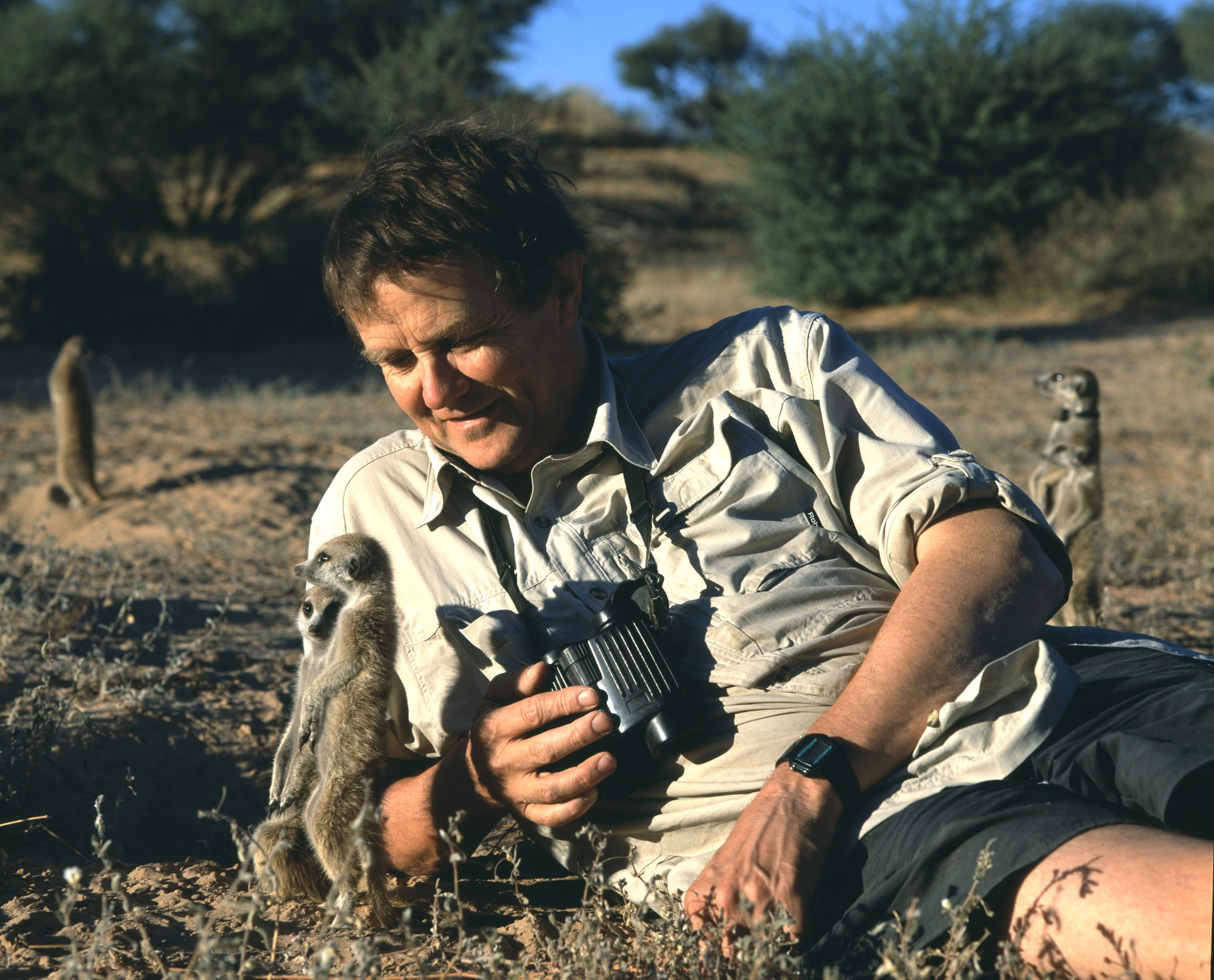
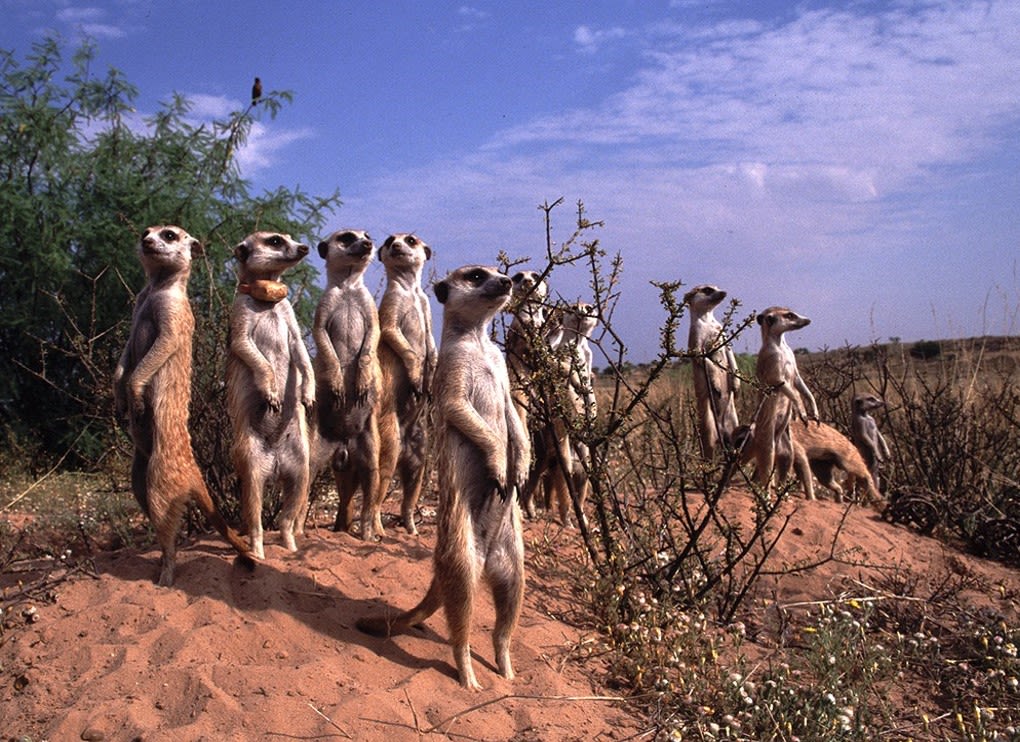
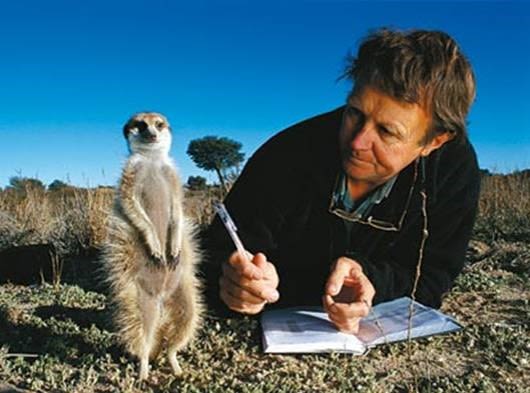

Professor Tim Clutton-Brock in the Kalahari, 1995.
Professor Tim Clutton-Brock in the Kalahari, 1995.


Professor Tim Clutton-Brock in the Kalahari, 2018.
Professor Tim Clutton-Brock in the Kalahari, 2018.
Professor Tim Clutton-Brock shares TEN FACTS ABOUT MEERKATS
1. Meerkats live in groups, with one dominant female who monopolises reproduction.
Living in groups of up to 50 (but usually 10-20) gives protection from the unpredictable desert environment, where variation in rainfall leads to large fluctuations in food availability.
2. Helpers babysit pups for a day at a time, providing food until they are three months old.
Babysitters can’t eat while on duty and have to go a whole day without food – so helpers take turns to babysit. Everyone in the group contributes to feeding pups, adjusting the amount of food they give pups to the amount of time the pups spend begging.
3. Helpers take turns to go on lookout duty while everyone else is feeding.
A ‘watchman’s call’ tells the group who is on duty and looking out for predators, so the others can concentrate on feeding. Standing on their hind legs helps sentinels see further. Meerkats on sentinel duty make calls that carry a surprising amount of information about the dangers they spot (listen here). They have different calls for eagles, snakes and jackals, adjusted for danger level from ‘I’m not quite sure about this’, to ‘RUN FOR YOUR LIFE!’
4. Dominant females are more likely to breed successfully if they have lots of helpers to find food.
Pups in large groups get more food, grow faster and have higher chances of surviving and breeding successfully. Large groups can also displace their neighbours and extend their range - groups are territorial and compete intensely. They often go on forays in the ranges of neighbours and will attack and kill pups left at breeding burrows - and babysitters too if they get a chance.
5. Breeding females stop their daughters breeding - even if that means killing their own granddaughters.
From the dominant female’s perspective, children are preferable to grandchildren because they’re more closely related to her.
6. Dominant females can produce up to four litters a year, so long-lived females can produce a lot of offspring.
The most successful female the Kalahari Meerkat Project studied reared 81 pups in her life. This is only possible because the rest of the group looks after them.
7. Dominant females usually breed with single male, who has immigrated from another group.
As a result, meerkats born in the group are close relatives; many are full siblings. The high levels of kinship between group members facilitate the evolution of helping since, on average, brothers and sisters share 50% of their genes.
8. Females seldom mate with closely related males to avoid the costs of inbreeding, so adolescent males have to look elsewhere.
Males start to visit neighbouring groups after the age of three - if the resident males see them they attack immediately, and kill if they can. If they’re not spotted, roving males can sometimes mate with subordinate females. When they eventually find a group without a resident male, they stay there, become the dominant male and breed with the resident female.
9. When a dominant female dies she is succeeded by the oldest subordinate female - normally one of her daughters.
Sisters often compete intensely for the dominant position since this may provide their only chance of breeding. The oldest and heaviest female usually wins. Females are likely to lose their place in the breeding queue if their younger sisters outgrow them - to avoid this they adjust their growth rates, growing faster if their younger sisters are doing so.
10. Mortality is high, since meerkats live in open country with the risk of predation by snakes, eagles, jackals and wild cats.
Around a fifth of all individuals die each year, so that few live for more than five years - although successful breeding females can reach 12 or 13 years old.
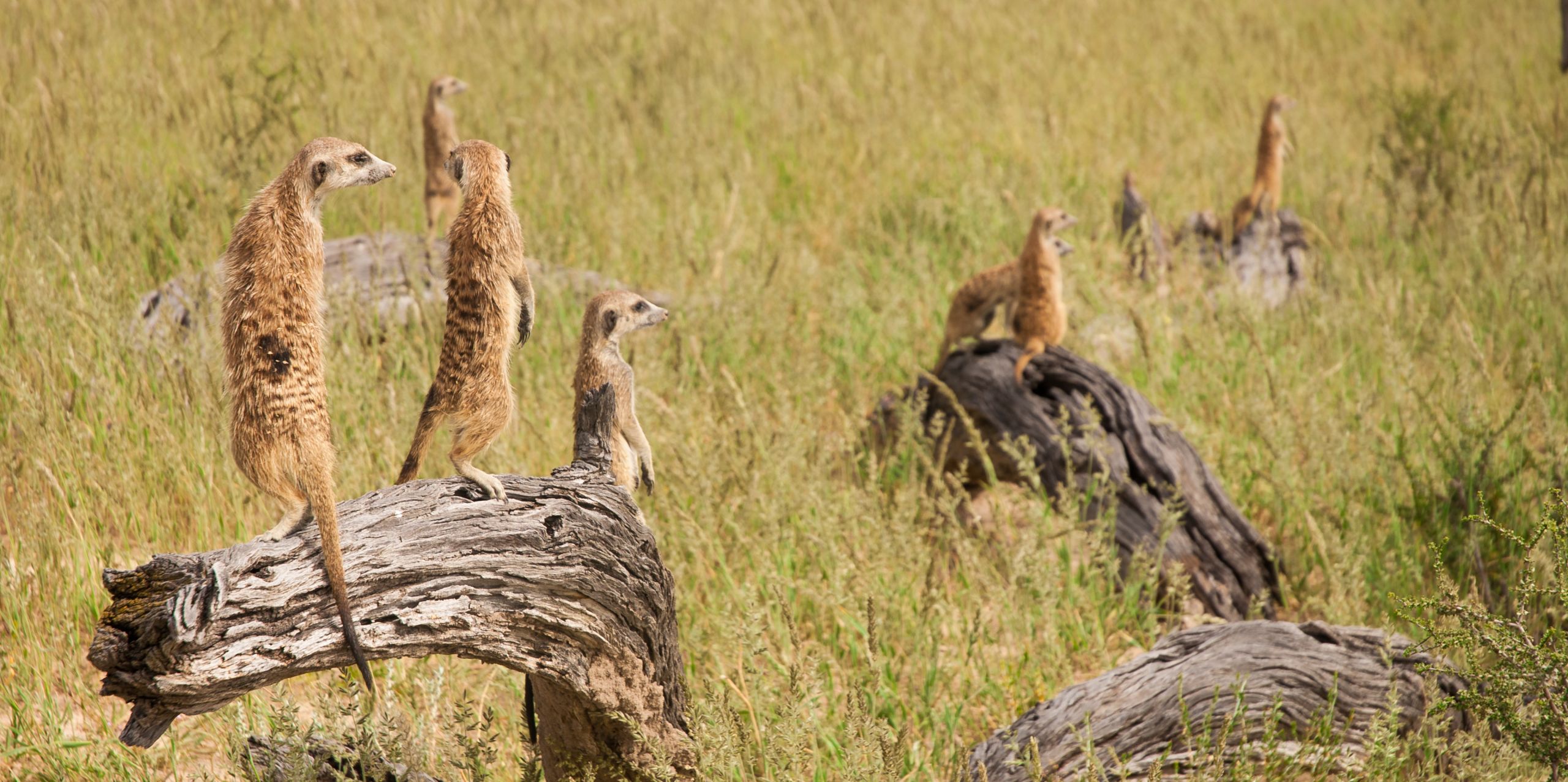
The Kalahari Meerkat Project (KMP) is run jointly by Professor Tim Clutton-Brock at the University of Cambridge and Professor Marta Manser at the University of Zurich. Researchers from the Universities of Edinburgh, Swansea, Capetown, Pretoria, Natal, Ulm, and Duke are also involved, extending the range of topics that the project can explore. Their work is funded by funded by grants from the European Research Council and Swiss National Fonds.
Oxford Scientific Films' new series, Meerkat Manor: Rise of the Dynasty, traces the histories of Flower’s granddaughters and great granddaughters. It is airing in the US on BBC America and AMC+ and is expected to be aired in the UK later this year.
Credit: Oxford Scientific Films.
Credit: Oxford Scientific Films.
In October 2021, Tim talked to Jim Al-Khalili on BBC Radio 4's The Life Scientific about his five decades of research. Listen here.
Story published: 16 July 2021; updated 26 Oct 2021.
All photographs are used with thanks to members of the Kalahari Meerkat Project.

